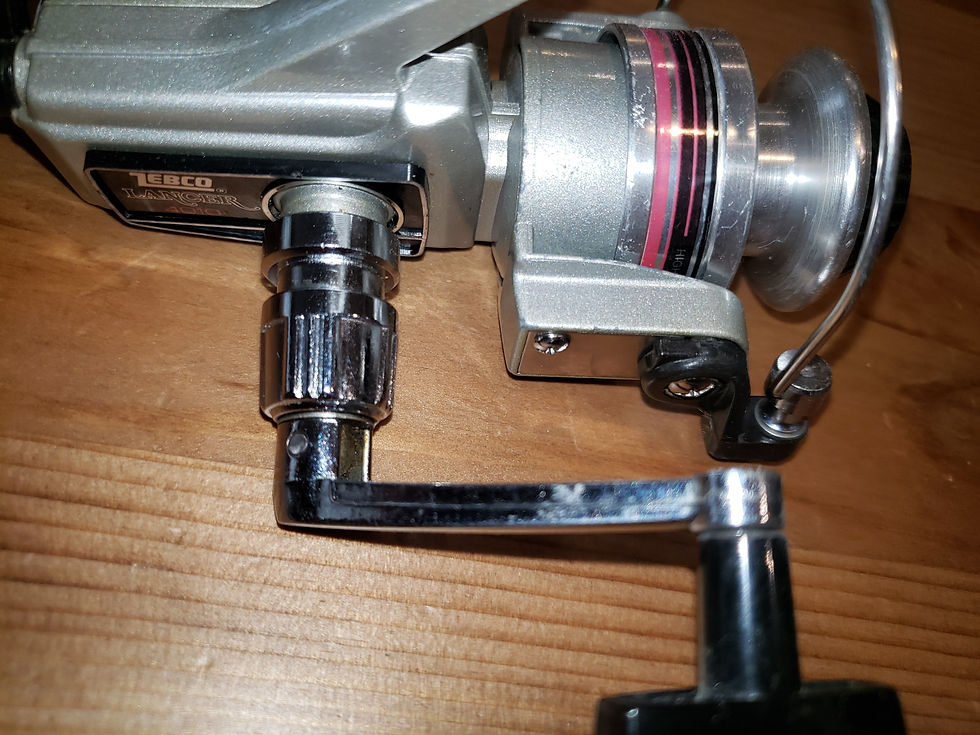Zebco Reels.
Since its incorporation in 1932, Zero Hour Bomb Company had become well known for manufacturing dependable electric timer bombs for fracturing geologic formations. When Jasper R. Dell Hull walked into the Tulsa offices of the Zero Hour Bomb Company in 1947, he carried a piece of plywood with a few nails in a circle wrapped in line. Hull’s 1947 visit was fortunate for Zero Hour Bomb Company, due to post World War II demand for its electrically triggered devices declining. With the military no longer needing oil to fuel the war, the U.S. petroleum industry was in deep recession. Furthermore, with company patents due to expire in 1948, Zero Hour Bomb Company needed a solution quickly,” explained Joe Sills, digital editor for a fishing tackle retailer. After examining Hull’s invention, a prototype fishing reel, the company hired him for $500 a month. Hull later received a patent that would transform Zero Hour Bomb Company – and sport fishing in America. After trying to design ‘brakes’ for bait-casting reels, and failing at launching another fishing reel company, Hull hit on a better way one day as he watched a grocery store clerk pull string from a large fixed spool to wrap a package. Hull realized he needed a cover to keep the line from spinning off the reel itself and soon developed a prototype reel. Zero Hour officials asked two company employees who were avid fishermen for their opinions on the reel. One tied his set of car keys to the end of the line and sent a cast flying through one of the windows in the plant. The other sent a cast high over the building. All were impressed, Hull, had tested several designs before developing a production process that would work; the first reel produced on May 13, 1949. It was called the Standard; it made its public debut at the Tulsa sports expo in June. By 1954, the reel’s simple push-button system used today was introduced. The regional marketing name Zebco became popular, but the bottom of each reel’s foot was stamped with the name of the manufacturer at the time, “Zero Hour Bomb Company”. The official name changed to Zebco in 1956, soon after a friend of President Dwight D. Eisenhower asked the company to send a reel to the president. According to Zebco history when White House security officers saw the package labeled “Zero Hour Bomb Company” they quickly plunged the package into a tub of water and called the bomb squad. After changing the name to Zebco, the company left the oilfield behind for good. In 1961, Zebco was acquired by Brunswick Corporation and produced the 202 Zee Bee spin cast, an instant classic. After shifting reel assembly production to China in 2000, Brunswick sold Zebco to the W.C. Bradley Company. Zebco headquarters today remains in Tulsa, where it leases a 200,000-square-foot warehouse and distribution center. Jasper R. Dell “R.D.” Hull was inducted into the Sporting Goods Industry Hall of Fame in 1975 after receiving more than 35 patents. At the time of his induction, 70 million Zebco reels had been sold. He retired from the former oilfield time-bomb company in January 1977 after being diagnosed with cancer and died in December at age 64.

Zebco Lancer 4010

Zebco Lancer 4010

Zebco Lancer 4010

Zebco Lancer 4010
This Zebco Lancer was donated to us by Gary Love Sr. He bought this reel in 1984 in Colorado. He caught a lot of fish with this reel and it still works great. The Zebco Lancer 4000 series reels were made in Japan, starting in 1983.


